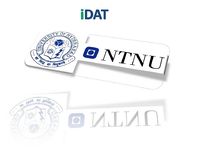Difference between revisions of ""i"DAT"
| Line 1: | Line 1: | ||
| − | [[Image:IDAT.jpg|200px|left]] iDAT is the name of a cooperation initiative between the University of Hyderabad and the Norwegian University of Science and Technology. | + | [[Image:IDAT.jpg|200px|left]] '''iDAT''' ('''I'''ndian '''D'''ata '''A'''nnotated in '''T'''ypecraft) is the name of a cooperation initiative between the University of Hyderabad and the Norwegian University of Science and Technology. |
The goal of the initiative is to create a pool of in-depth annotated data to support online knowledge representation, e-research, that is the free exchange of research data, and natural language processing initiatives that depend on richly annotated linguistic data. | The goal of the initiative is to create a pool of in-depth annotated data to support online knowledge representation, e-research, that is the free exchange of research data, and natural language processing initiatives that depend on richly annotated linguistic data. | ||
| + | |||
| + | |||
| + | ''iDAT also stands for ''''I'''' for Indo-Aryan, ''''D'''' for Dravidian, ''''A'''' for Austro-Asiatic and ''''T'''' for Tibeto-Burman, which are the four language families found in India.'' | ||
Revision as of 13:51, 7 October 2011
iDAT (Indian Data Annotated in Typecraft) is the name of a cooperation initiative between the University of Hyderabad and the Norwegian University of Science and Technology.
The goal of the initiative is to create a pool of in-depth annotated data to support online knowledge representation, e-research, that is the free exchange of research data, and natural language processing initiatives that depend on richly annotated linguistic data.
iDAT also stands for 'I' for Indo-Aryan, 'D' for Dravidian, 'A' for Austro-Asiatic and 'T' for Tibeto-Burman, which are the four language families found in India.
